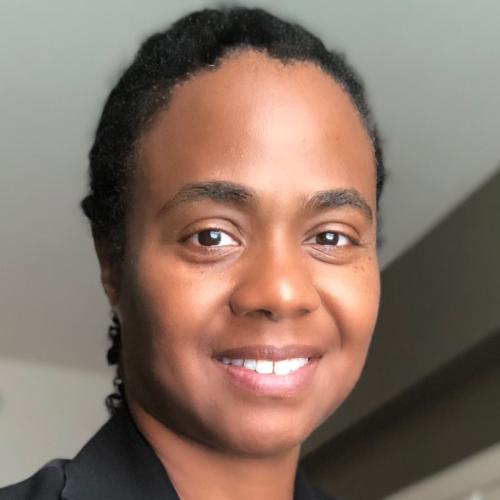Highlight how digital twins and hybrid ML models (e.g., Bayesian, predictive) enable virtual experimentation and proactive troubleshooting, reducing scale-up failures and supporting more reliable process performance at commercial scale.

Shruti Vij

Maria Florez
Bolsters innovation agility by embedding ML Ops practices, aligning data science and IT workflows to ensure reliable, scalable AI deployments and a culture of continuous improvement.
Active deep learning offers a promising approach for hit discovery starting from limited data by iteratively updating and improving models during screening by applying new data and adapting decisions. Key open questions include how best to explore chemical space, how it compares to non-iterative methods, and how to use it under data scarcity. We present ChemScreener, a multi-task active learning workflow for early drug discovery across large, diverse libraries or chemical spaces. Its Balanced-Ranking acquisition strategy leverages ensemble uncertainty to explore novel chemistry while maintaining hit rate enrichment by prioritizing predicted activity. In five iterative single-dose HTRF screens on WDR5 protein, ChemScreener increased hit rates from 0.49% (primary HTS screen) to 3–10% (average 5.91%; 104 hits from 1,760 compounds). Hits were consolidated, retested with close analogs together in the 269 compounds set and clustered; 44 hit compounds from 81 clusters of 269 compounds set advanced to dose–response and filtered by counter HTRF assays. Over 50% of those with IC50 < 45 μM were validated as WDR5 binders by DSF. We de novo identified three scaffold series and three singleton scaffolds as the hits. Overall, we demonstrated that ChemScreener can accelerate early hit discovery and yield more diverse chemotypes.

Lingling Shen
Explore how AI accelerates antibody discovery by enabling de novo design, epitope prediction, and in silico affinity maturation for highly specific, developable therapeutics.
Learn how deep learning and structure-based models optimize antibody stability, immunogenicity and target binding to advance precision biologics.

Petar Pop-Damkov

Eli Bixby
Eli makes sure Cradle's models and algorithms are doing what we think they are doing, and he keeps an eye out for the latest and greatest techniques in the literature. He was previously at Google (Brain, Accelerated Science, Cloud) working on biological sequence design, AutoML, and natural language understanding. He studied mathematics, computer science, and biochemistry

Claudette Fuller

Gevorg Grigoryan
Cradle
Website: https://www.cradle.bio/
Cradle's software helps scientists leverage the latest technological breakthroughs in AI to rewrite biology and unlock new therapeutics, materials, and food sources. Generate novel protein candidates, improve multiple properties simultaneously, and run fewer experiments to create optimized leads.
Explore how ML-enabled real-time control systems and continuous process verification improve yield predictability, reduce rework, and enable faster release - offering a direct line of sight to cost savings and product quality gains.
Strategic insights from complex, high-dimensional healthcare data, fostering integrated analytics and strengthening the organization’s competitive edge in precision medicine.
1. Regulatory workflows are complex but structured.
The presentation highlights that regulatory processes—spanning data management, authoring, reviewing, publishing, and health authority queries—are intricate yet follow consistent patterns. They are highly collaborative, interdependent, and mission-critical to bringing therapies from candidate nomination to market
2. AI is powerful but needs context and precision.
While AI excels at understanding and summarizing information, it struggles with reasoning and lacks domain-specific (drug development) context. Effective use of AI in regulatory work requires clear task definition—large enough to matter, but small enough to manage
3. Human-AI collaboration transforms regulatory efficiency.
When applied thoughtfully, AI can make regulatory work up to 100× faster without compromising quality—reducing months of effort to hours. Studies with Takeda and partnerships with Parexel demonstrate how AI can accelerate timelines, elevate human expertise, and make portfolio knowledge computable across programs

Lindsay Mateo
Weave Bio
Website: https://www.weave.bio/
Weave Bio is an AI-native company reimagining how life science organizations navigate regulatory work. Through its core product, the Weave Platform, Weave brings intelligence, structure, and collaboration to every stage of the regulatory process.
The Weave Platform connects people, data, and technology in a unified workspace that combines AI-powered drafting, source-linked data, and configurable workflows. By keeping experts firmly in the loop, it transforms complex, manual regulatory work into transparent, traceable, and collaborative processes.
Built for biotech, pharma, CROs, and regulatory consultants, Weave supports the full regulatory lifecycle—from early development through submission—helping teams move faster, maintain quality, and scale with confidence.
Learn how AI models enhance physics-based simulations to predict molecular interactions and optimize drug design.
Discover the synergy between machine learning and classical methods to accelerate screening and improve the accuracy of drug discovery.


